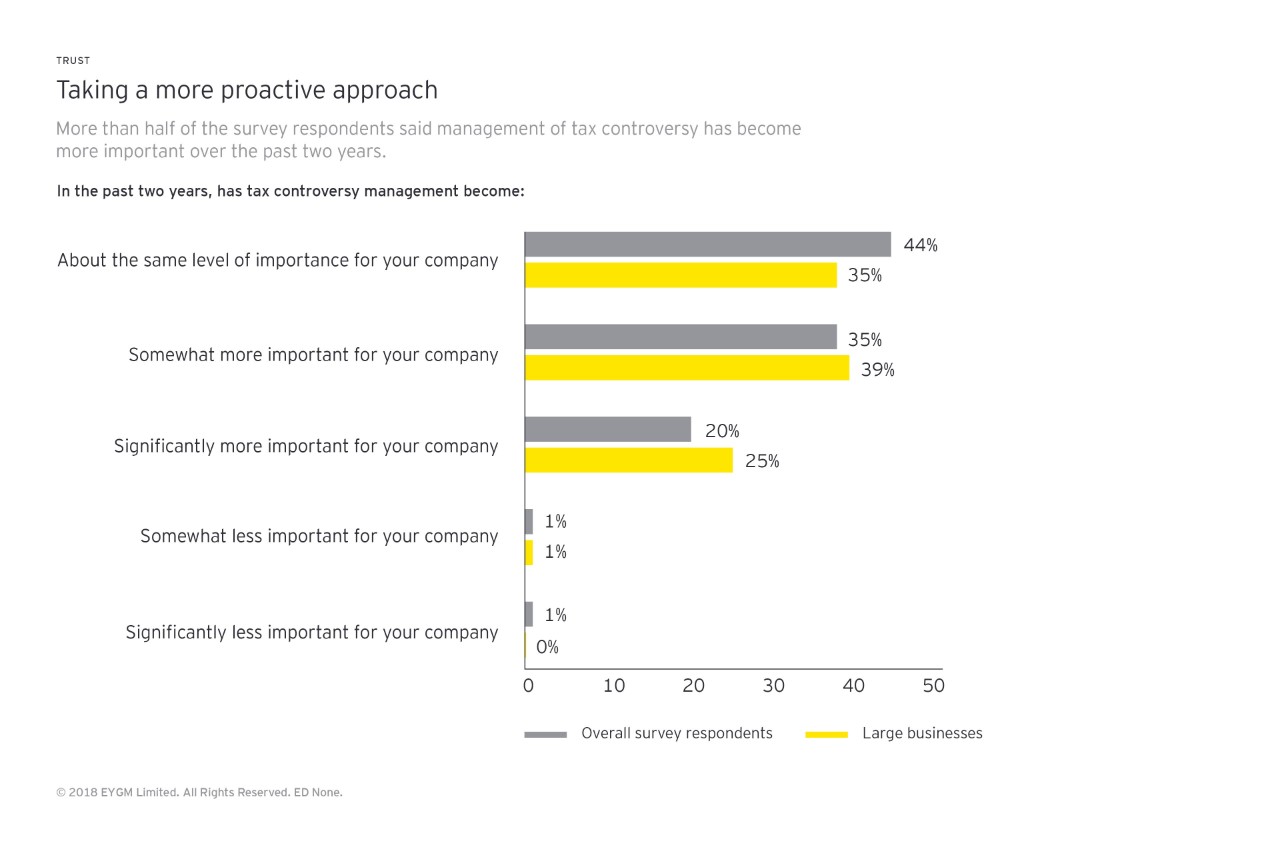Three steps to take
In today’s uncertain and unsettled tax environment, businesses need to take steps to prevent controversy while at the same time be prepared to manage and resolve disputes that do inevitably arise. Here are some ways to approach the new challenges.
1. Prevent tax controversy
Stop controversy before it occurs with top-down governance, systems and processes that enhance monitoring and compliance. An effective tax risk operating model should enable businesses to identify the tax risks in all of the jurisdictions in which they operate.
To maintain global consistency, businesses should have in place a documented tax strategy setting out the business’s approach to compliance, planning and interactions with tax administrations.
In light of the BEPS reforms and tax authorities’ increased enforcement efforts, businesses should revisit their transfer pricing documentation and defense files, as well as re-evaluate tax provisions to reflect retroactive risks that might arise from aggressive inquiries and the dynamic approach taken by most countries to interpreting the BEPS amendments to the Organisation for Economic Co-operation and Development (OECD) Transfer Pricing Guidelines.
Businesses with complex and/or high-risk transfer pricing models may want to consider making greater use of bilateral or multilateral advance pricing agreements to reduce future risks and controversies. Businesses with inherent permanent-establishment risk should consider an operating model redesign.
2. Manage tax controversy
Businesses should have tools and processes in place that allow them to manage ongoing and potential tax controversies at a global, strategic level. Implementing a global compliance and reporting framework can help businesses track and manage controversy by providing a multijurisdictional overview of controversy in a centralized repository.
To increase oversight, businesses should consider adopting a tax corporate governance framework, which formally documents a business’s policies and procedures and provides for an overview of tax risks by senior management and/or the board.
Information is at the heart of tax controversy management. The head of tax can’t be expected to know the unknown, and the best way to get ahead of nasty surprises is to have an understanding of the issues as they emerge, and then have a plan as to how they are dealt with and whose responsibility it is to handle them. Good governance at the planning stage will lead to fewer controversies, and mapping all controversies will minimize balance sheet impact.
3. Resolve tax controversy
Businesses should develop a plan that sets out the circumstances under which disputes will be resolved, litigated or otherwise handled, which will help allow for faster resolution so businesses can resume focus on their core mission.
Businesses should evaluate the pros and cons of various dispute resolution mechanisms (appeals, mediation, arbitration, litigation and the mutual agreement procedure) and strive to build better relationships with tax authorities.
Adapting to the new environment
Corporate taxation has been under an intense and sustained public relations spotlight for the last several years, and our survey shows that businesses are responding accordingly to dim the glare. Rapid advances in technology and unprecedented leaps in multilateral cooperation among tax authorities have fundamentally and permanently altered the rules of engagement.
Businesses’ best approach is to prevent controversy in the first place. However, it is inevitable that some disputes will arise, so having processes in place to contain and efficiently resolve them will be critical. In this new tax risk environment, being proactive is the best defense for businesses that seek to limit uncertainty and minimize the potential for significant controversy.
Related content

Summary
BEPS has fundamentally changed the authority-taxpayer dynamic, and businesses are taking a more proactive approach to managing controversy.


